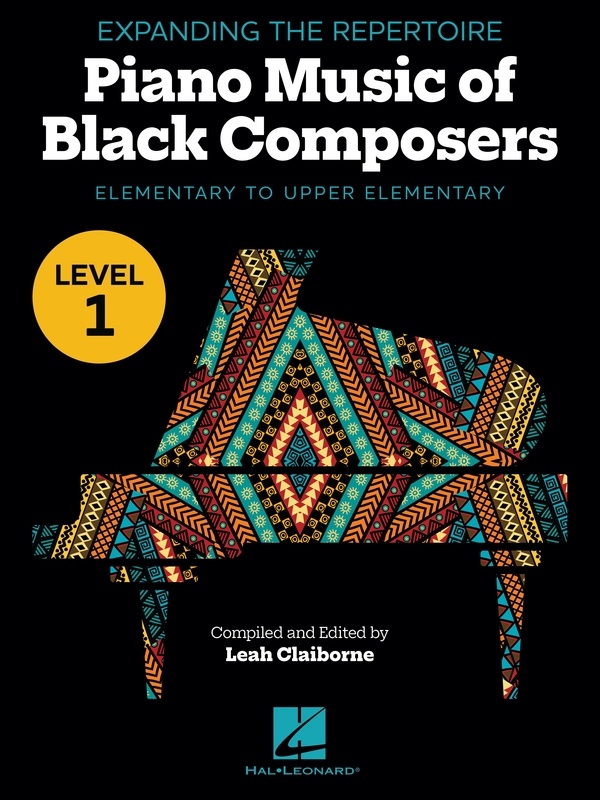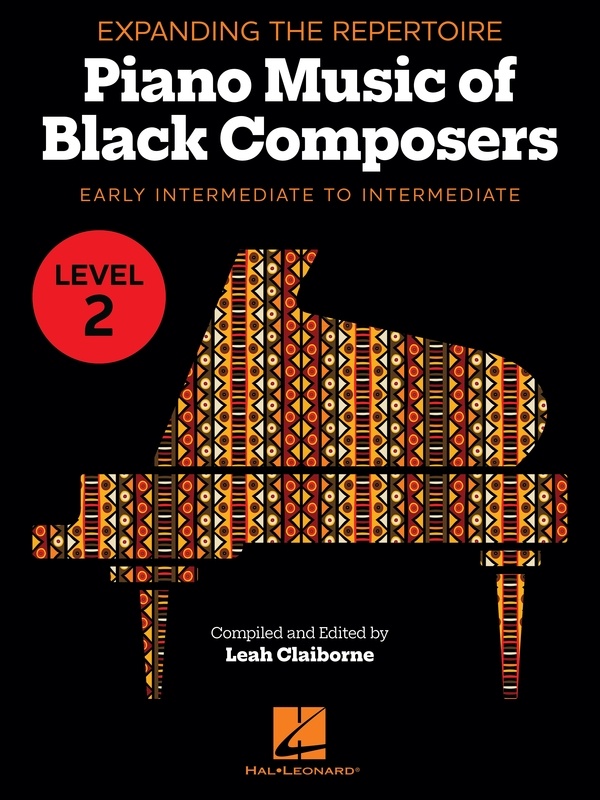“For far too long, the contributions of Black composers in the piano repertoire have not been brought to the forefront. Despite a persistent wave of great scholarship to bring awareness of these composers to light, only recently has there been deliberate inclusion of their works. Even with more awareness and attempts for inclusion, the myth that there is only piano music by Black composers for advanced pianists remains. We often look at great composers as solely creators of advanced repertoire, but we forget that many of them specifically wrote music for their own students of all skill levels.” – Leah Claiborne, editor Piano Music of Black Composers
Dr. Leah Claiborne has dedicated herself to promoting piano music composed by black musicians. An accomplished pianist and performer herself, as well as holding the position of Assistant Professor of Music in the Division of Arts and Humanities in the College of Arts and Sciences at the University of the District of Columbia, Dr. Claiborne has collated a two fantastic anthologies.
The key feature of these books, is that the pieces have been chosen with fundamental musical and technical challenges in mind. Each piece serves to progress the student, with the pieces presented in progressive order. There is an exciting range of styles across both Book 1 and 2, with pieces using the styles of jazz, blues, gospel, as well as some more classical stylings.
Book 1
The first piece in Book 1 is Left Alone by Leah Claiborne. This is one of the most interesting beginner pieces I have seen – as it’s written for one hand, on the treble clef, using only basic rhythmic notation; but it’s for the left hand. The rest of Claiborne’s pieces in this book are fun, playful and exciting to play. These pieces are simply bursting with teachable moments – fun articulations, body percussion and contrasting dynamics. Later in the book, Dr. Claiborne manages to completely contrast this with a beautiful, and mournful melody about those who had fallen; The Unsung.
Other composers featured in this book are Ulysses Kay (Slumber Song was such a hit with one of my students), James and John Johnson, Ignatious Sancho (Lady Mary Monatue’s Reel is a great finger workout!), Hale Smith and Blanche K. Thomas. In an effort to further general understanding of history and culture, Thomas is a strong advocator for the inclusion of Negro Spirituals in music curriculums in America. The works included in this book include some very popular tunes including Go Down Moses, Steal Away and We are Climbing Jacob’s Ladder. Lyrics are included – making these strong talking points in lessons.
The final two pieces in the book are absolutely delightful jazz works by Hale Smith. These last two are a step up in difficulty when compared to the pieces before, but provide a nice segue into the following book in the series.
Book 2
Leveling up to Early Intermediate/Intermediate, Book 2 offers a delicious variety of stylings. Easing into. the book with a strong and simple mark by Ulysses Kay, Hale Smith returns with some more delicious jazz. Blanche K. Thomas contributes some more spirituals, this time with a step un in difficulty. There is much more classically influenced music in this book, with a stunning Adagio in F Minor by Chevalier de Saint-Georges making a prominent feature in the middle of the publication. This is an absolute showcase piece and can provide a very interesting and dramatic twist in any program.
Rounding it out is a delightful virtuosic piece by Estelle Ricketts entitled Rippling Spring Waltz. The piece was first published in 1908 – making her the first Black female composer to do so.
This book is a true celebration of Black American culture and history. In addition to this, these two books are an absolutely fantastic collection of progressive pieces that would be dynamite in any teaching studio.


